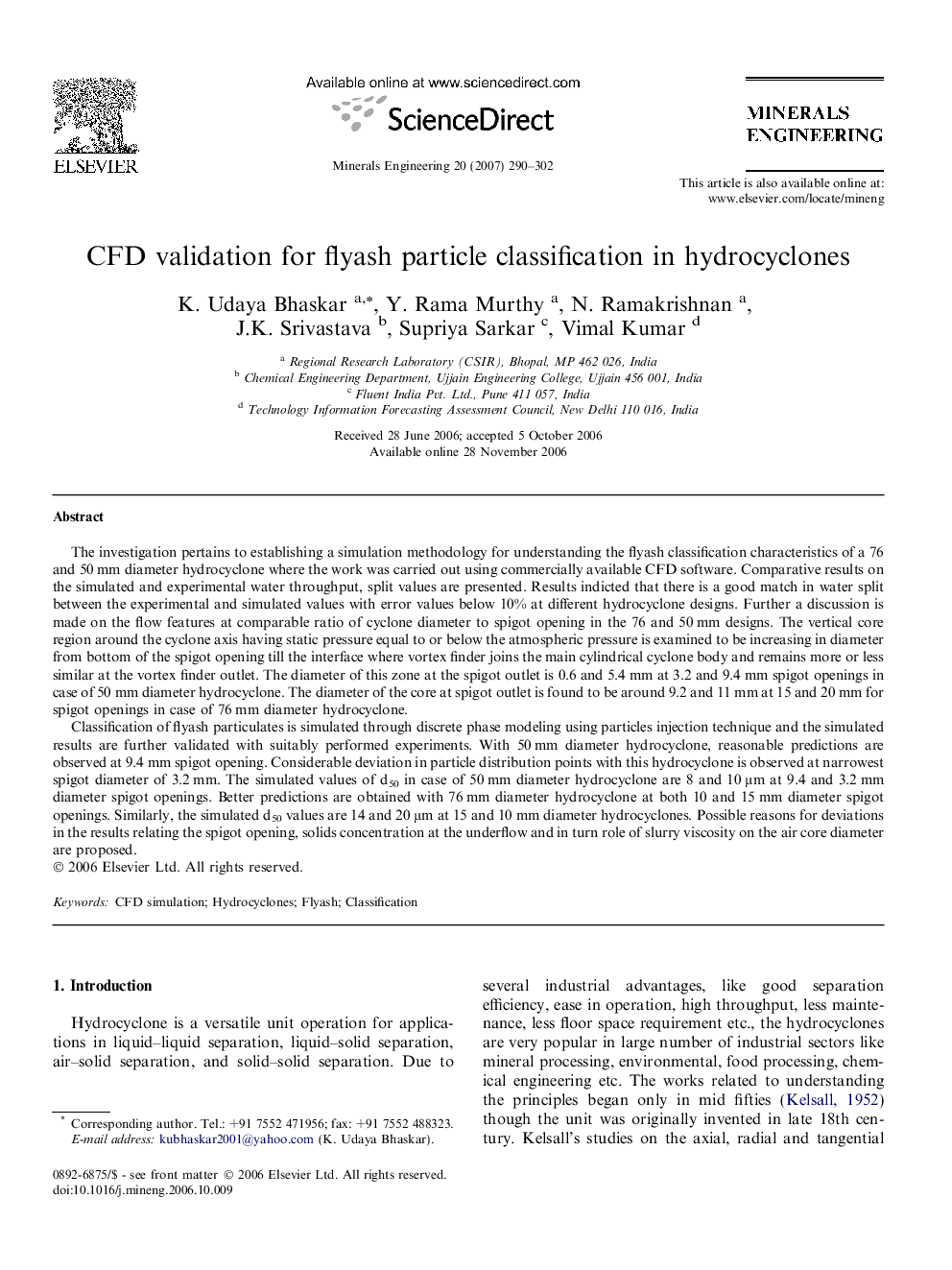| کد مقاله | کد نشریه | سال انتشار | مقاله انگلیسی | نسخه تمام متن |
|---|---|---|---|---|
| 234459 | 465412 | 2007 | 13 صفحه PDF | دانلود رایگان |

The investigation pertains to establishing a simulation methodology for understanding the flyash classification characteristics of a 76 and 50 mm diameter hydrocyclone where the work was carried out using commercially available CFD software. Comparative results on the simulated and experimental water throughput, split values are presented. Results indicted that there is a good match in water split between the experimental and simulated values with error values below 10% at different hydrocyclone designs. Further a discussion is made on the flow features at comparable ratio of cyclone diameter to spigot opening in the 76 and 50 mm designs. The vertical core region around the cyclone axis having static pressure equal to or below the atmospheric pressure is examined to be increasing in diameter from bottom of the spigot opening till the interface where vortex finder joins the main cylindrical cyclone body and remains more or less similar at the vortex finder outlet. The diameter of this zone at the spigot outlet is 0.6 and 5.4 mm at 3.2 and 9.4 mm spigot openings in case of 50 mm diameter hydrocyclone. The diameter of the core at spigot outlet is found to be around 9.2 and 11 mm at 15 and 20 mm for spigot openings in case of 76 mm diameter hydrocyclone.Classification of flyash particulates is simulated through discrete phase modeling using particles injection technique and the simulated results are further validated with suitably performed experiments. With 50 mm diameter hydrocyclone, reasonable predictions are observed at 9.4 mm spigot opening. Considerable deviation in particle distribution points with this hydrocyclone is observed at narrowest spigot diameter of 3.2 mm. The simulated values of d50 in case of 50 mm diameter hydrocyclone are 8 and 10 μm at 9.4 and 3.2 mm diameter spigot openings. Better predictions are obtained with 76 mm diameter hydrocyclone at both 10 and 15 mm diameter spigot openings. Similarly, the simulated d50 values are 14 and 20 μm at 15 and 10 mm diameter hydrocyclones. Possible reasons for deviations in the results relating the spigot opening, solids concentration at the underflow and in turn role of slurry viscosity on the air core diameter are proposed.
Journal: Minerals Engineering - Volume 20, Issue 3, March 2007, Pages 290–302